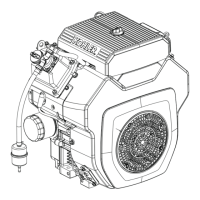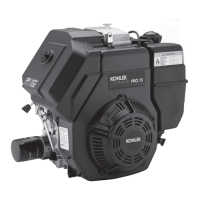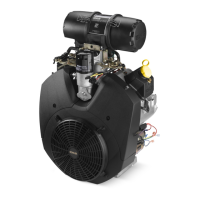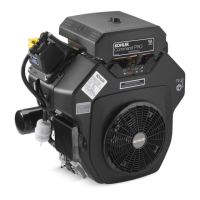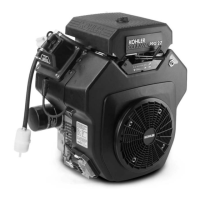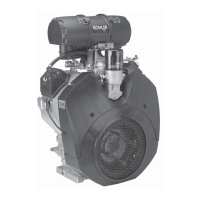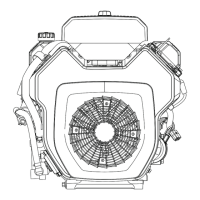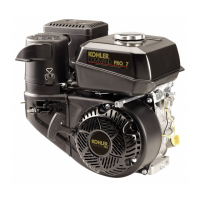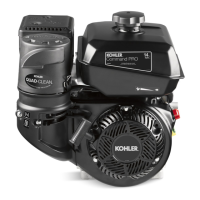8.8
Section 8
Electrical System and Components
Testing of Smart Spark
™
Ignition Systems
The following procedure is provided for
troubleshooting ignition problems on CH16 engines.
It will allow you to pinpoint the failed components.
Special Tools Required:
• Ignition System Tester* (see Section 2)
• Multi-meter (digital)
• Spark Advance Module Tester* (see Section 2)
Specifications Required:
• Spark plug gap 0.76 mm (0.030 in.)
• Ignition module air gap 0.008-0.012" (0.010")
*NOTE: Ignition system tester must be used to test
Smart Spark
™
ignition. Use of any other
tester can result in inaccurate findings.
Battery on unit must be fully charged and
properly connected before making any of
these tests. Be sure drive is in neutral and all
external loads are disconnected.
Preliminary Test
To be certain the reported problem is in the engine
ignition system, it should be isolated from the unit,
as follows.
1. Locate the plug connectors where the wiring
harnesses from the engine and unit are joined.
Separate the connectors and remove the white
kill lead from the engine connector. Rejoin the
connectors, and position or insulate the kill lead
terminal so it cannot touch ground. Try to start
the engine to verify whether the reported
problem is still present.
a. If the problem is gone, the electrical system
on the unit is suspect. Check the key switch,
wires, connections, safety interlocks, etc.
b. If the problem persists, continue with the
following troubleshooting procedure. Leave
the kill lead isolated until all testing is
completed.
Troubleshooting Procedure
1. Disconnect spark plug lead and attach it to
ignition system tester. Attach tester clip to a
good ground, not to the spark plug.
2. Crank the engine and observe tester for spark. Do
not touch tester while cranking.
3. If no spark is observed, verify that spark advance
module (SAM) is getting proper voltage.
a. Return to the connector where the engine
and unit wiring harnesses are joined and
find the double red lead in the back of the
engine connector. Using a DC voltmeter with
a probe lead, test the voltage at the terminal
on the double red lead with the key switch
in both the start and run positions. At least
7.2 volts must be present. If voltage is low,
proceed to step 4. If voltage is above 7.2,
proceed to step 5.
4. Remove the blower housing from the engine.
a. Trace the black ground lead from the SAM
and check that the ground tab and terminal
connections are all tight. Recheck voltage at
engine connector. If voltage is still low, check
battery, key switch, and wiring on unit.
b. When you are certain there is proper
voltage at the connector, retest for spark. If
there is still no spark, proceed to step 5.
5. If you skipped step 4, remove the blower housing
at this time. Check all leads and connections from
the SAM to the wiring harness and from the SAM
to the ignition module. Pay special attention to
the connection in the red lead, as the connectors
can be misaligned in a way that the terminals
don't make contact. Correct any problems found
with the wiring or connections and retest for
spark. If no wiring problems were found, or there
is still no spark, proceed to step 6.
6. Zero ohmmeter and perform the following
resistance checks on the ignition module. Module
should be at room temperature (70° F).
a. Remove the brown lead and test resistance
from the wide tab to the laminations.
Resistance should be 145-160 ohms.
b. Remove the yellow lead and test resistance
from the narrow tab to the laminations.
Resistance should be 900-1000 ohms.
c. Test resistance from the spark plug lead
terminal to the laminations. Resistance
should be 3800-4400 ohms.
If any of the resistance readings are outside of the
specified ranges, replace the ignition module. If the
resistance readings are all good, test the SAM using
the instructions that came with the SAM tester.
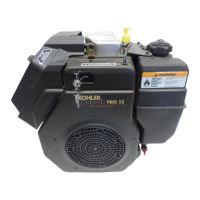
